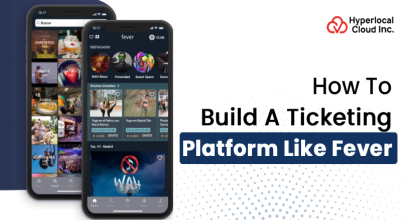Learning a new language is not only popular but also essential these days. The world is becoming ever more compact. Learning (and eventually speaking) a foreign language enables us to understand one another on a deeper level through shared experience.
- Over 1.5 billion people worldwide have enrolled in an English language course.
- 80% of Europeans between 15 and 30 are bilingual or multilingual.
People study foreign languages for a variety of personal and professional reasons. Many people, surprisingly, don't even require a compelling argument. About half of Babbel users study a new language because they find it enjoyable; the other third do so to improve their cognitive health.
Let's figure out how to make a language-learning app together.
What Is A Language Learning App?
Any software designed to help you learn a new language, whether it increases your vocabulary, improves your grammar, or both, is called a "language learning app." These apps' lessons can help you learn advanced language concepts.
The Potential Of A Foreign Language Learning Mobile Application
The worldwide English language digital education market was valued at over $2 billion in 2015 and was projected to rise to $5.13 billion by 2020. By 2025, market research predicts that the worldwide market for online language learning will increase to $10.5 billion from its projected value of $7.3 billion in 2019. The founders of Duolingo have a proven track record of success, raising over $100 million in funding over six years at a valuation of $700 million.
Benefits of Building A Language Learning App Like Duolingo
Now that you understand what should be included, let's review the benefits of creating a language-learning app like Duolingo.
1. Learn Anywhere And Anytime
A language-learning app can help people study any language they want, whenever and wherever it's convenient.
Your app provides a language learning solution to help users try a new language if they have unexpected free time.
2. Learn Any Language
Language learning apps like Duolingo succeed because they can teach users any language, including Portuguese, English, Italian, German, Irish, Spanish, French, Chinese, etc.
Make your users' experience of learning a new language pleasurable and straightforward. Allow them to participate in a variety of classes!
3. Amazing User Interface
Creating a language learning app like Duolingo can benefit from having a beautiful and intuitive user interface. The slow pronunciation of a phrase or word can be played back by clicking on the app's tiny turtle button.
The exercises instruct you to type what you hear, so speak slowly and clearly. Therefore, the app can entice many users with its attractive interface and ease of use if you create it.
4. Various Kinds Of Courses
Creating various language courses enables you to reach the largest possible audience. Your teachings can benefit both advanced and novice students.
5. Enable Users To Track Their Progress
Users can keep tabs on their development and regularly identify problem areas using a language learning app.
The system shows users their performance compared to previous efforts and the amount of improvement they have made.
Ease the process for users to receive personalized drills and critiques that prepare them for excellent in-class instruction.
Start Building Your Language Learning App Like Duolingo With Industry Experts, NOW!!
Top Language Learning Apps
Here are some of the well-known language-learning apps;
Duolingo: People wide use Duolingo as a free service for learning a new language. Its ease of use, convenience, and adaptability have received praise from thousands of users. Duolingo offers courses covering various languages, including English, Spanish, French, German, Italian, and other widely spoken languages.
Memrise: Memrise app allows users to learn for free offline. It helps you learn over 150 different tongues, which is its advantage.
Busuu: To start with Busuu, you must create an account as the first step. After that, it's a breeze to pick a language and a difficulty level (ranging from easy to advanced, with more than ten distinct levels in between).
AccelaStudy: AccelaStudy has developed a dedicated iOS app for each of the twenty languages. You can access all the study materials in the app without an internet connection.
HelloTalk: HelloTalk is a free app that facilitates real-time language correction in two-way conversations between native speakers.
Rosetta Stone: Rosetta Stone boasts over 52 different mobile apps and hundreds of offline courses, making it a trusted name in language learning.
Also Read: How To Create A Dog Walking App?
How to Make A Language Learning App Like Duolingo?
Here are some steps to make a language learning app like Duolingo.
Design The App Framework
You can create an app to give life to your ideas and positively impact the world. To attract and keep users engaged, your app must stand out in the growing ed-tech industry competition. The app's creator should have a well-defined vision for its ultimate purpose and how they want it to work.
Gather The Right Information
Accurate data is crucial for a language-learning app. Consult language professionals to craft a syllabus that will keep students interested and engaged.
Create Mockup Models
If you don't want users to abandon your app in the middle of a course due to UI inconsistencies, you better make sure they have a positive experience. Designing an app requires making mockups, a crucial step that should be noticed.
By selecting the right design hierarchy, widgets, etc., you can get a real idea of how the app will look and feel once you're ready to launch it in the market.
Hire Qualified Developers
Creating an app is a breeze with the right team of programmers. The development team will conceptualize, design, and build the app's features. A competent team will write the app's code, customize it for the platform of your choice, and test it thoroughly with your input to ensure it runs smoothly.
Usually, the best developers also provide after-release maintenance.
UI/UX Design
Adhering to a clear and powerful app design guarantees a unified and reliable user experience. Simplifying your app for users and encouraging them to return will be beneficial.
Create a Strong Database
Language learning apps contain a lot of information. Enabling a robust database such as MySQL, MongoDB, Cassandra, or any other that you deem best suited to handle large data can be helpful.
AI-Enabled Chat Box Integration
The developers can increase learning effectiveness by integrating an AI-enabled chatbot for a more personalized experience and tailored education. Duolingo, one of the market leaders, makes use of this function.
Cloud Storage
Including more subjects increases the possibility of data loss. You can use the cloud to store sensitive data or course materials. Both Amazon and Google provide reliable cloud storage options.
App Testing
Performing Quality Assurance (QA) testing before releasing an app to the public is crucial.
App Launch
We recommend releasing a beta version of the app before the full release. Releasing a beta version will excite users and generate feedback, ideas, etc.
Also Read: How To Build An App Like Porch?
Essential Elements to Consider When Making a Language-Learning App
Now, let's analyze the language-learning apps' most useful aspects.
1. Register/Log In
Users can register by entering their name, email address, gender, birth year, and password. Social media integrations can also help users register or log in with a tap.
2. User Profile
Users' age, sex, language preference, motivation for selecting that language, and daily goal-setting information can all be useful in creating a tailored experience for each user.
3. Learn Screen
It's a dashboard with tracking capabilities that also provides tools to aid learning.
4. Pronunciation Checks
This handy tool will enable users to learn the proper pronunciation or accent.
5. Live Streaming
The use of video conferencing between instructors and students enables individualized instruction. It can inspire and boost their morale.
6. User Feedback
Getting user input is essential to developing a successful app. Each course should conclude with a review section where you can reflect on what you've learned and make any necessary adjustments.
8. Add Rewarding System
Users should be able to track and receive rewards for their daily accomplishments through the app. Doing daily assignments on time earns users incentives.
9. Motivational Notification
The tediousness of the language-learning process often causes users to lose interest in the middle. As little as a word of praise midway through a lesson can boost motivation. Timely reminders and push notifications would also benefit them.
Advanced Features To Make Your Language Learning App Stand Out
Chatbots: Chatbots can act as consultants. The chatbots adjust their responses according to the students' moods, using more or less humor or more or less serious language.
One-on-One Tutoring: Joining a virtual personal tutor can help users get their questions answered and feel more connected to the app.
Gamification: Engaging games like puzzles enable users to pick up the language as a brand-new function. A more enjoyable and fruitful educational experience is the result. It may benefit students of all ages.
Competition Among Users: Competition motivates people and improves their overall performance. The app will have a dashboard that allows users to monitor and evaluate their progress concerning their personal best or that of their peers.
Set Goal: Another method of boosting motivation is allowing users to set goals and provide rewards.
Ready To Join The Era of Language Learning App Like Duolingo? Share With Us
Tech Stack You Need to Build a Language Learning App
You need a robust technology stack to build a feature-rich and structurally sound language-learning app. People use the following technologies today:
Front-End Development
Developers commonly use HTML, CSS, JavaScript, and front-end frameworks like React, Angular, and Vue.js to build the UI.
Back-End Development
Web frameworks like Ruby on Rails, Express.js, or Django handle the app's server-side logic and database management.
Database
Developers use databases like MySQL, MongoDB, or PostgreSQL to store and retrieve user data and lesson content.
Cloud Hosting
Amazon Web Services, Microsoft Azure, and Google Cloud Platform are common cloud hosts.
Mobile Development
Create a mobile app for language learning. Developers now build reliable language-learning tools as mobile apps using frameworks like React Native, Flutter, and so on.
Machine Learning
Some apps employ machine learning algorithms like natural language processing, speech recognition, and text-to-speech to serve users better, personalize their content, and give them precise feedback.
Integration With External Services
Language-learning apps often integrate third-party services such as Google Translate, Speech-to-Text, Text-to-Speech, and other language-learning tools like Grammarly to offer more features and improve the user experience.
Developing a language app requires choosing the right technology stack. Locating programmers who are proficient in this technology stack to work for a startup takes time and effort. Hyperlocal Cloud will help you every step of the way to design and develop a unique app that serves your every need.
Also Read: How To Make A Food Delivery App Like Talabat?
How Much Does it Cost to Develop a Language Learning App?
The team's skill, the speed with which they work, the release platform, the technologies used, the number of features, the sophistication of the design, and so on affect how much building an app or website will cost. Factor in the cost of promotion, quality assurance testing, server hosting, retail placement, product reviews, and other similar services.
Language Learning Mobile App Cost Depends On Several Factors
Selection of App Platform
Your choice of building for Android, iOS, or both platforms will affect your budget for app development. Since various sets of technology are required by different platforms, the costs will vary accordingly.
Development Team
Two different development teams are required for the app development process, i.e., the front-end developers and the back-end developers. The team comprises the following members:
- Project Manager
- iOS/Android Developers
- Back-end Developers
- UX/UI Designers
- Quality Testers
- App Design
Increasing the complexity of the app's design will increase its cost while simplifying the interface will have a smaller impact.
App Testing
Testing is essential because the quality of an app has far-reaching consequences. We employ a team of testers to identify any issues with the app and fix them so that the user experience is uninterrupted.
It's impossible to estimate how much creating an app will cost precisely due to the many variables at play. However, a simple app designed for a single platform will cost between $25,000 and $35,000, while a complex app designed for multiple platforms will cost anywhere from $50,000 to $70,000.
Looking For A Cost-Effective Language Learning App Like Duolingo?
Ready to Build Your Language Learning App?
You know every step to make your language app a reality. Put this information into practice and develop your language app. You can contribute to a better educational experience for everyone involved by implementing two-way communication, including only credible learning materials in your app, and allowing students to join the community.
Please get in touch with us if you need assistance developing a full-fledged app like Duolingo. We are among the best mobile app development companies in the world.



